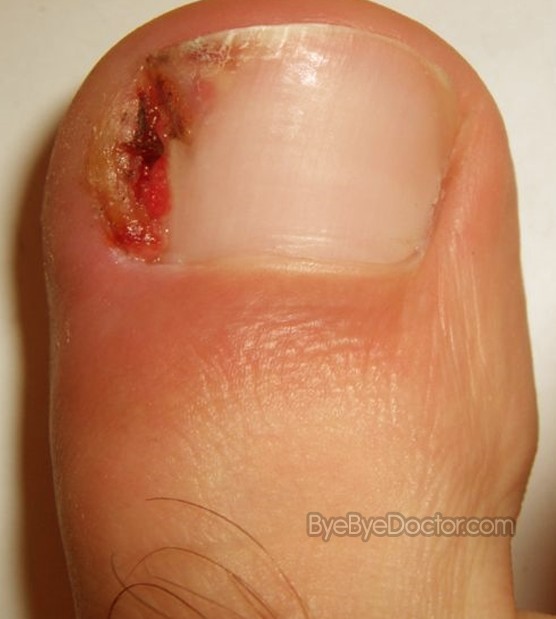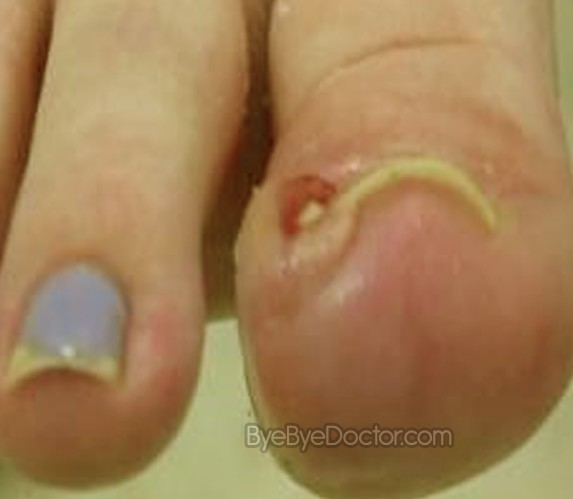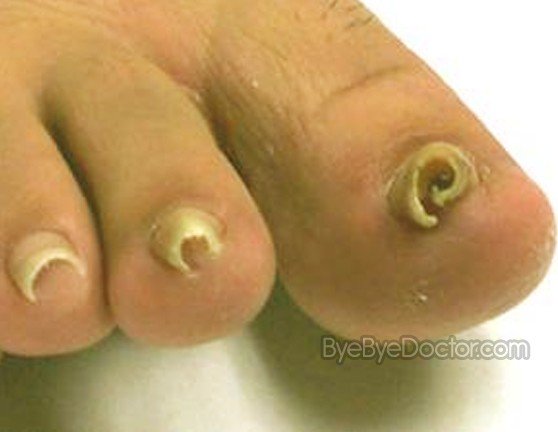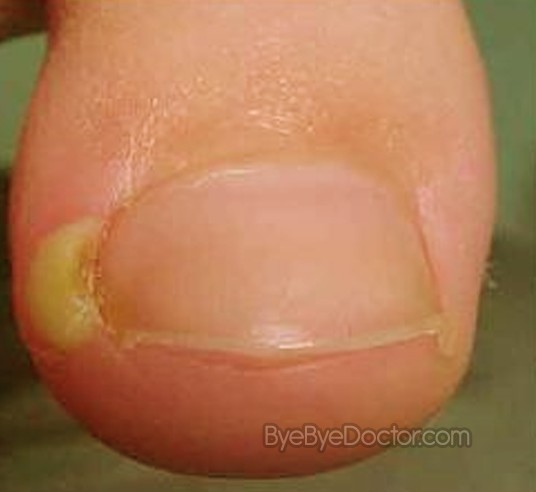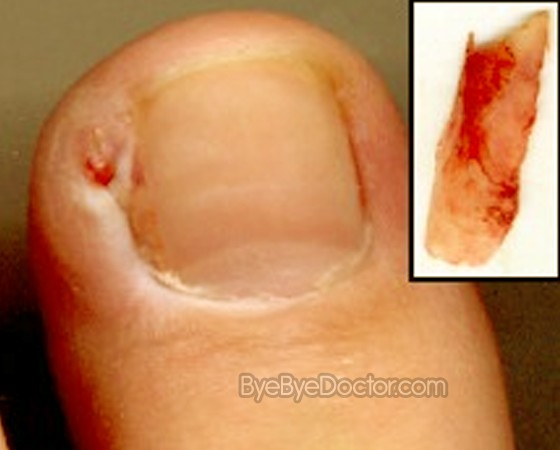What is an Ingrown toenail?
This is a fairly common problem where the side or corner of one of the toenails grows in the tender flesh of the toe. This results in pain, swelling and redness and in some cases an infection. In most cases, ingrown toenails affect the big toes.
In some cases, the individual may care for the problem toenail themselves. But when the pain is spreading or severe, a medical professional needs to be seen to take action to relieve the distress and aid in avoiding any complications.
If anyone has diabetes or any other problems that may cause circulation to the feet to be poor, then these individuals are at a greater risk for complications.
Ingrown Toenail Symptoms
Symptoms and signs of ingrown toenail consist of:
- Tenderness as well as pain in the toe along both or only one side of the nail
- Redness surrounding the toenail
- Toe swelling around the nail
- Tissue around the toenail is infected
When is it time to see the doctor:
- Discomfort which is severe is experienced in the toe
- Redness or pus is spreading thru the toe
- Have diabetes or other impairment of circulation to lower extremities
Ingrown Toenail Causes
Toenails which are ingrown occur when the nail grows into the fleshy tissue of the toe, mostly the big toe. Frequent causes consist of:
- Shoes that crowd the toenails
- Toenails cut not straight across or too short
- Toenail injury
- Toenails that have unusual curve
If left undetected or untreated, this problem with the toenail may cause an infection to the bone underneath and this can often cause a very serious infection of the bone.
Any complications can become particularly severe especially if the individual has diabetes due to the fact that diabetes affects the circulation as well as the supply of nerves to the feet and can weaken it. So, basically, any rather slight injury to the foot – cut, callus, corn, scrape or ingrown toenail –can in some cases not heal appropriately and this can lead to a severe infection. An open sore which is difficult to heal, such as a foot ulcer, might need surgery in order to avoid gangrene. Gangrene is the decay as well as death of tissue caused by the interruption in blood flow to certain areas of the body.
Ingrown Toenail Treatment
A primary care physician can normally diagnose the ingrown toenail found not only on symptoms but also a physical exam of the nail and skin surrounding it.
Typically an ingrown toenail can be treated thru home remedies. But if the pain lingers or if there is redness or pus which appears to be increasing, it is time to see your primary care physician. Some of the nail may need to be removed or the doctor may need to prescribe antibiotics for infection.
Treatments for Ingrown toenail can include:
Cotton beneath nail
For an ingrown nail which is very slight (pain and redness but no pus), under the edge of the nail the doctor may put cotton in order to separate the nail from any overlying skin. This allows the nail in the long run to grow above the edge of the skin.
http://www.Symptoms-Causes-treatment.blogspot.com detect diseases at an early stage symptoms, and find out the causes and treatments best suited.
Removal of partial nail
For an ingrown toenail which is more severe (pain, pus as well as redness), the physician may remove or trim the ingrown part of the nail. The doctor will numb the toe before this procedure by injecting the toe with an anesthetic or numbing agent.
Tissue and nail removal
For an ingrown toenail which is recurrent, the doctor will probably advise removing a part of the toenail together with the underlying nail bed tissue in order to avoid that portion of the nail from growing back. This technique can be accomplished with a laser, a chemical, or some other method.
The doctor may also endorse the use of antibiotics either topical or oral for the treatment of ingrown toenail particularly if the toe is infected or at a risk of becoming infected.
Ingrown Toenail Surgery
If the toe is infected, then surgical exclusion of either part or the entire nail as well as drainage of the abscess will be necessary. This is normally performed in the physician’s office or in the emergency area. The procedure extent will be subject to how severe the infection, any further problems medically and if this problem is recurring.
Surgical Removal
- A tetanus shot will be given if it has been 5 years since the last one. With ingrown toenails, the open wound could cause tetanus to develop.
- The physician will then inject anesthetic medication where the toe connection with the foot. This will numb the whole toe.
- The physician then will drain the pus from the end of the toe as well as remove any additional tissue that has grown around the end of the nail.
- The physician may choose to terminate some cells that could cause the nail to grow back by applying a chemical such as phenol to the skin under the nail. Also, extreme cold or lasers can be used to destroy cells in the nail bed. This is so that the edge of the nail which causes the problem will be unable to return, which is likely with recurring or severe infections.
- A procedure called a lateral matriectomy is when surgically a portion of the nail bed is removed and is normally performed by a specialist. It is considered the typical treatment for recurrent or chronic ingrown nails.
- There are many newer types of surgery that do not alter the nail bed at all. Rather they remove a portion of the soft tissue beside and/or underneath the nail in order to make more room for the nail to grow out. These types of surgeries have shown great promise, but are not yet the standard of care as they are still under study.
- Antibiotics are normally not prescribed after surgery since draining the abscess will take care of the infection.
- The toe is then covered with ointment and gauze.
Follow-up after Surgery
- Keep the doctor applied dressing on for 2 days.
- On the 2nd day, remove the dressing and then wash with water and soap. Then apply triple antibiotic ointment which can be bought at the drugstore and apply a new gauze. Repeat this procedure 2 times a day until the wound is healed.
- The physician may want to recheck the wound in 3 to 5 days
- If antibiotics are prescribed, take as directed.
- Keep the wound dry and clean. Follow any wound care instructions specifically as given by the physician.
- For the first 3 days, keep the foot propped up above the level of the heart as much as possible. This will check to control the pain.
- If the physician prescribed any pain medication, take it as directed. Otherwise, Tylenol or Motrin may be used for pain control if you have no allergies to these medications.
Ingrown Toenail Home Remedies
To treat an ingrown toenail alone, some suggestions include:
Soak the foot
Do this 3 times each day for 15 to 20 minutes each time in water that is warm. Soaking in warm water reduces swelling as well as relieves tenderness.
Placing cotton under the toenail
Place fresh bits of cotton beneath the ingrown edge once soaked. This will aid the nail to ultimately grow over the skins edge. Change this cotton each day until the redness and pain end.
Topical antibiotic
Put on an ointment which is an antibiotic and bandage the area that is tender.
Choose practical footwear
Contemplate wearing sandals or shoes which are open-toed until the toe heals.
Pain medication
If the pain is severe, take over- the-counter pain medications, for instance ibuprofen (Advil, Motrin IB) or acetaminophen (Tylenol) to help get rid of the pain until you are able to schedule a visit with your primary care physician.
Check feet
If you are a diabetic, check the feet each day for any signs or symptoms of an ingrown toenail or other problems of the feet.
Ingrown Toenail Pictures
